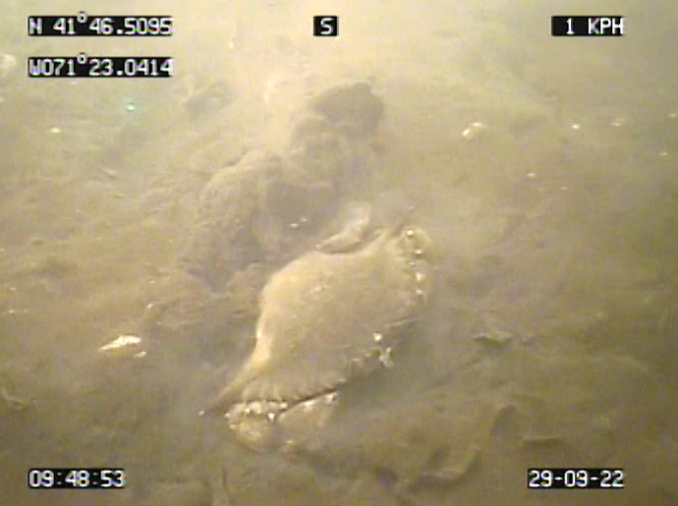September 25 – October 1, 2022
The boat crew conducted benthic video surveys along the Bullock Reach, Edgewood, and Sabin transects on September 29, 2022. Scale lasers were used in the footage at Bullock Reach and Sabin, separated by 29 cm. Visibility through the water column was inconsistent at all transects, ranging from poor to fair; fine observations were difficult in some areas. The bottom of all sites was characterized by sands and muds. All sites hosted dense patches of shell hash and rubble, occasional boulders and cobbles were also spotted at Edgewood. Algal coverage was diverse this week. Sabin featured large mats of branching red algae (dominant), Ulva, and red sheet-like algae. Bullock Reach also exhibited some dense areas of branching red algae, in addition to smaller patches of Ulva and red sheet-like algae. Edgewood had little algae coverage. All sites hosted dense diatom felt. General biotic activity was high at all sites as noted by extensive tracks and trails. Rare benthic video sights included many small schools of juvenile black sea bass (all sites), mantis shrimp Squilla (Sabin), horseshoe crabs (Sabin and Edgewood), flat fish (Bullock Reach), and a sea robin (Sabin). Infaunal activity was moderate; many large burrows (likely from Squilla) and small burrows (all sites), as well as some small tube-building fauna (Sabin and Bullock Reach). Common observations were spider crabs (Bullock Reach), boring sponges (all sites), hermit crabs (Edgewood and Bullock Reach), slipper snail Crepidula (all sites), Nassariid mudsnails (Bullock Reach), spaghetti worms (Edgewood and Sabin), blue crabs (Edgewood and Sabin, photo below), as well as large colonies of mermaid’s glove sponges and red bearded sponges (Sabin). Amphipod tube mats were not observed.





